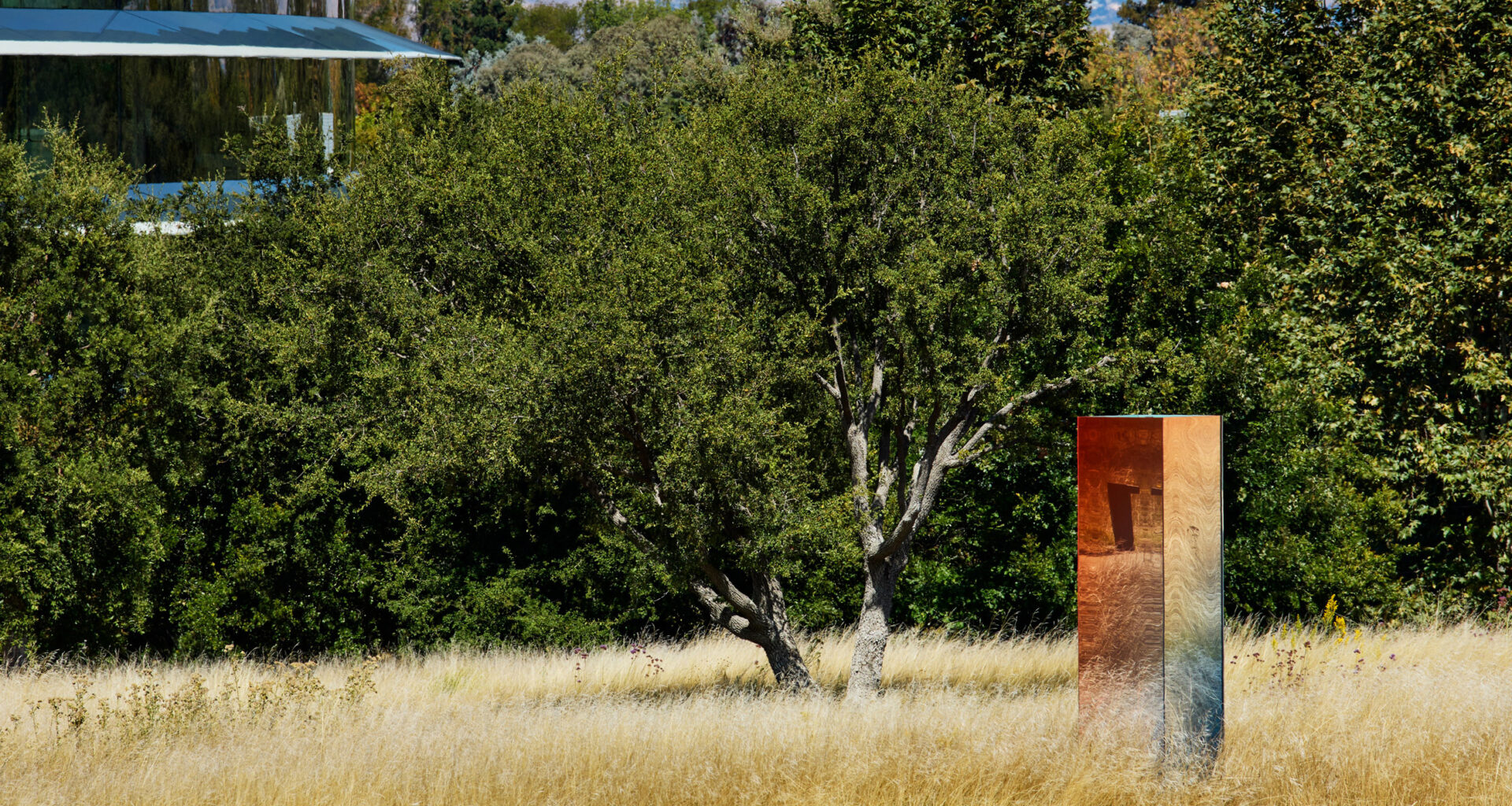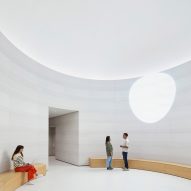Dutch designer Sabine Marcelis has created a trio of mirrored and resin installations at Apple Park in California, all informed by the latest iPhones.
Marcelis was invited by Apple to create a series of installations in and around the Observatory building at Apple Park to mark the launch of the latest iPhones.
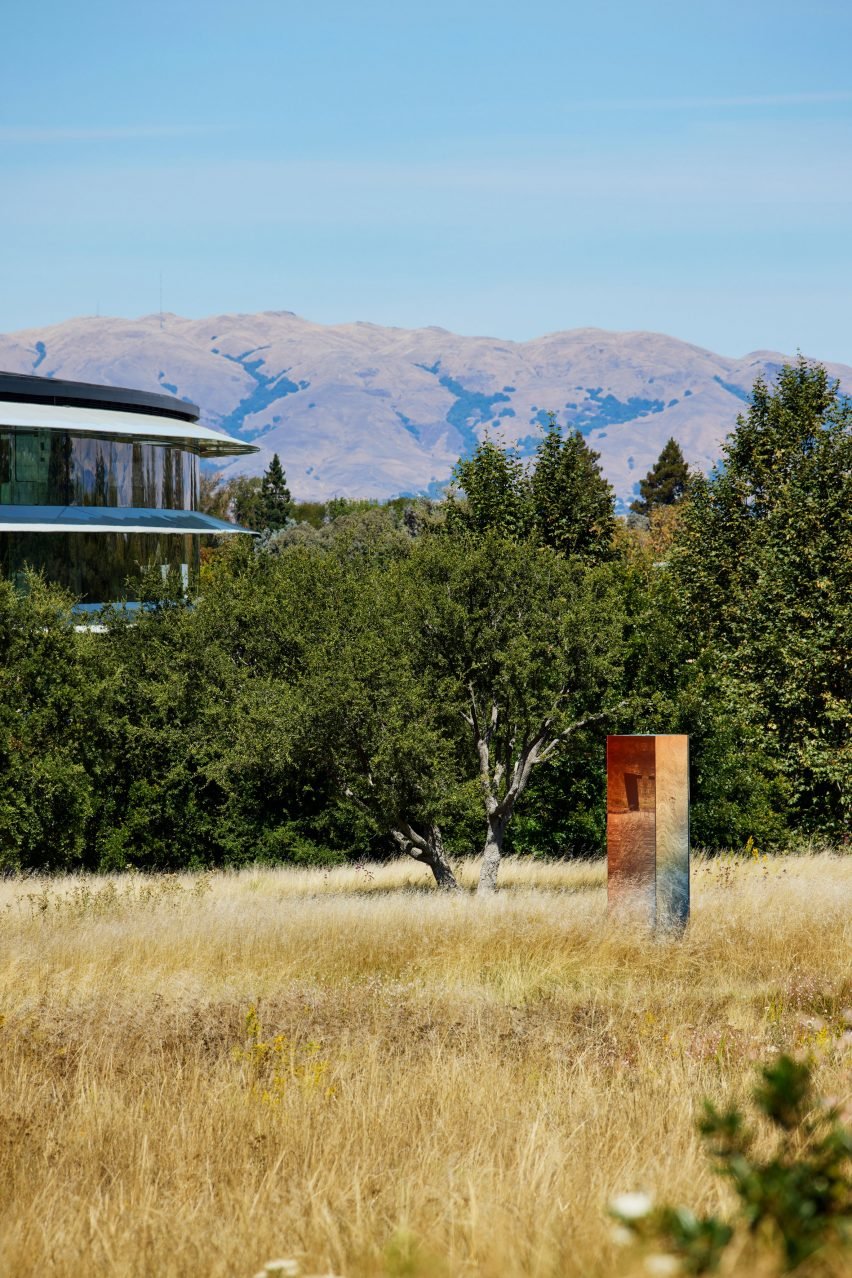 Sabine Marcelis designed a mirrored obelisk at Apple Park
Sabine Marcelis designed a mirrored obelisk at Apple Park
“Apple invited me to create different installations within the observatory for the launch that would allow people to experience the new products in different ways,” Marcelis told Dezeen during at interview at Apple Park.
“So I really zoomed in on different elements of the Apple software, the Liquid Glass, which is a sort of a natural marriage between what I already do with this lensing effect and the layering of colour.”
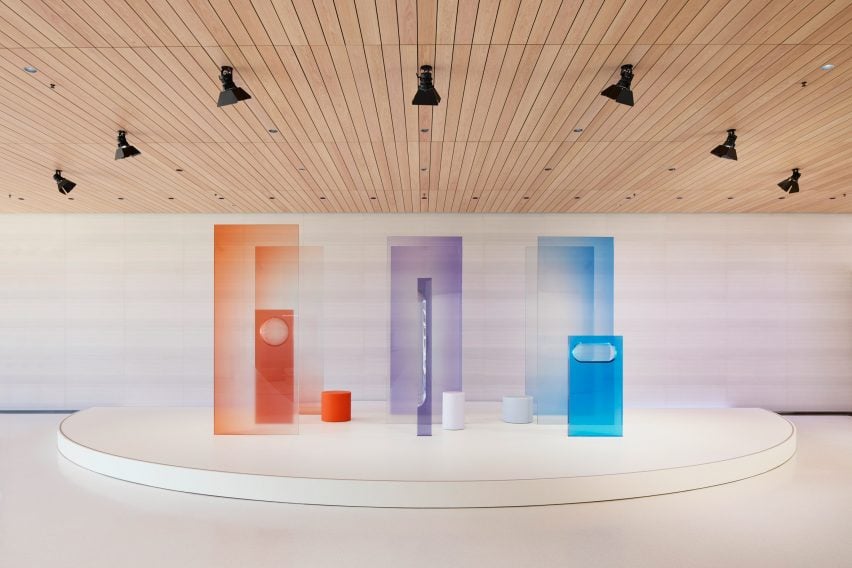 She also designed a trio of installations in the Observatory
She also designed a trio of installations in the Observatory
Within the building, which was used as a hands-on area for people to test the products that were unveiled earlier in the day, Marcelis created a large installation of standing slabs that were informed by both the shapes and colours of the iPhones.
She also created a pair of acrylic-topped tables, described as “a materialisation of the Liquid Glass”, and mirrors for a semi-enclosed living-room-style space.
The designer also designed pieces for a seating area.
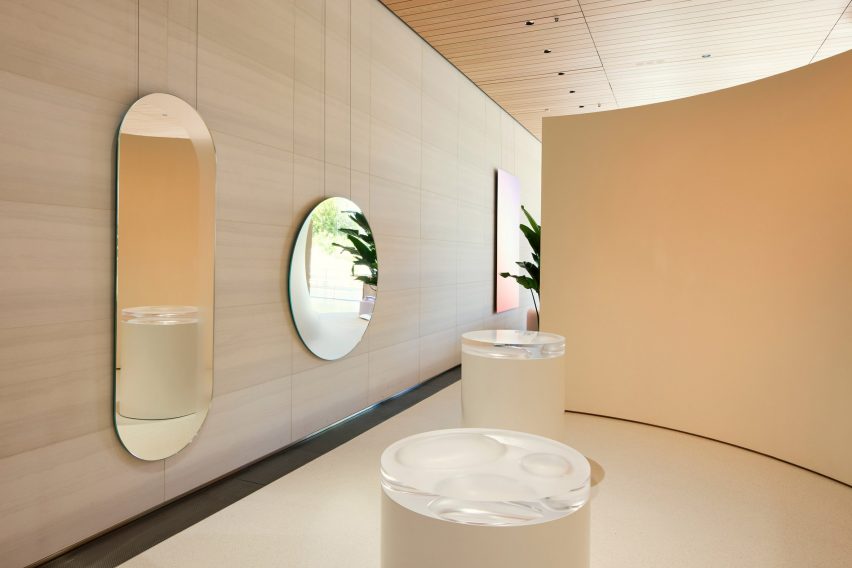 One of the spaces contains two resin-topped tables
One of the spaces contains two resin-topped tables
“The brief was really to create three different zones where people could experience the new products in different ways,” said Marcelis.
“So the mirrors are for photographing your reflection and trying on different accessories. The lounge or the lifestyle area is more of a space where you could have them flat on the glass installation, which is a bit like a deconstructed inside of a phone.”
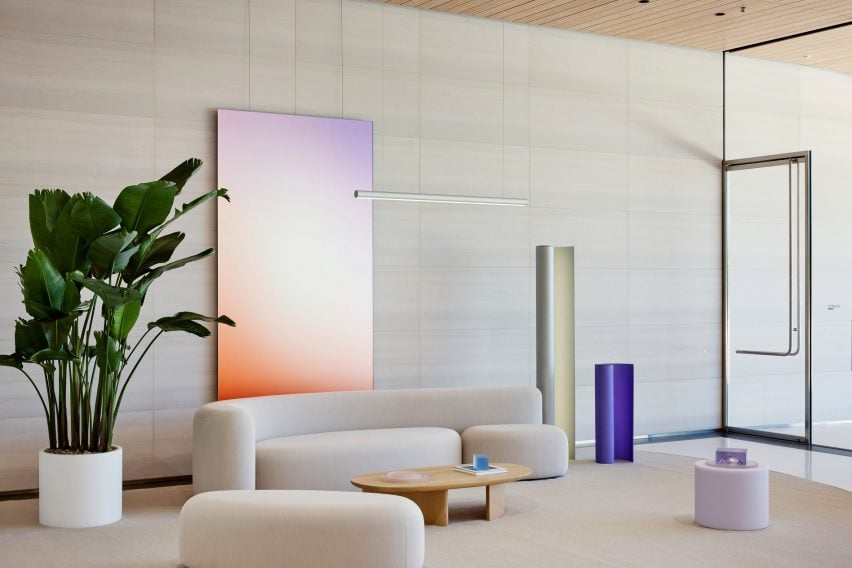 Marcelis designed pieces for a seating area
Marcelis designed pieces for a seating area
To further encourage visitors to the iPhone launch to test the functions of the latest phones, Marcelis suggested creating an object in the landscape that could be photographed from the Observatory’s terrace.
She created a 330-centimetre-high obelisk from powder-coated steel that stands between the Observatory and the main, Foster + Partners-designed Apple Park building.
Following the launch, the obelisk is set to find a permanent home at an Apple location.
Exclusive photos reveal Apple’s subterranean Apple Park Observatory
“It’s kind of a continuation of the different sundials that I’ve done in the past – the idea was to create a very static object, very singular, but very much responding to its surroundings,” Marcelis said.
“I really love that it’s in the high grass and when the sun is on it, the colour sort of wraps around the object. So on one side, it’s more orange. On the other side, it’s more blue. So, depending on what time of day and how the sun hits it, it also casts a really bright reflection.”
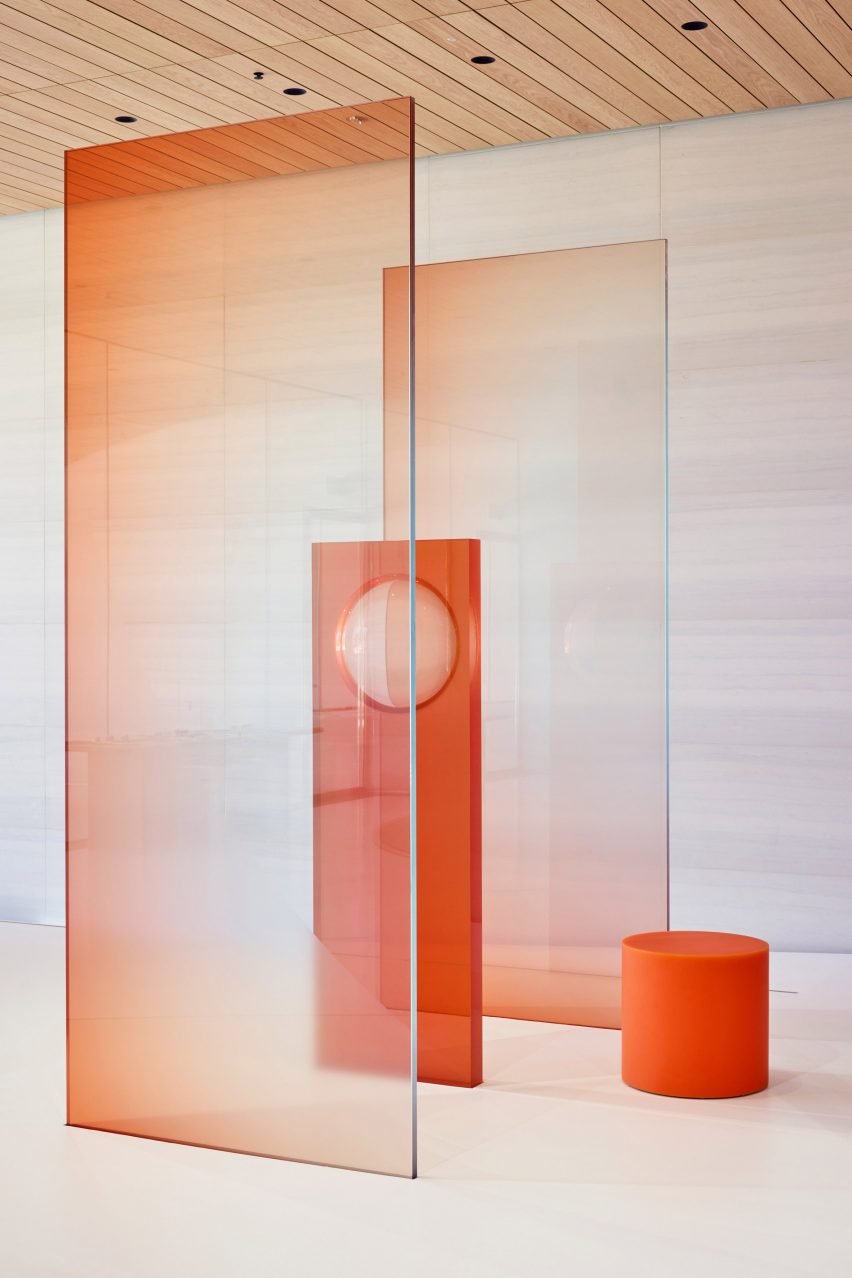 Each of the pieces was derived from the iPhone colours
Each of the pieces was derived from the iPhone colours
With each of the pieces, Marcelis aimed to draw attention to the colours of the phones, which she was only given glimpses of due to the secrecy surrounding the launches.
“I didn’t see everything,” she said. “I saw elements, which I think is actually kind of a nice way to work – I feel like the new elements are what make these phones extremely special, and to just be able to focus on the essence of that is very in line with how I work.”
“The main thing was really colour – translating [the phones’] colours with coloured glass, within the coloured mirror and the coloured resin – trying to showcase that colour through materials in different ways.”
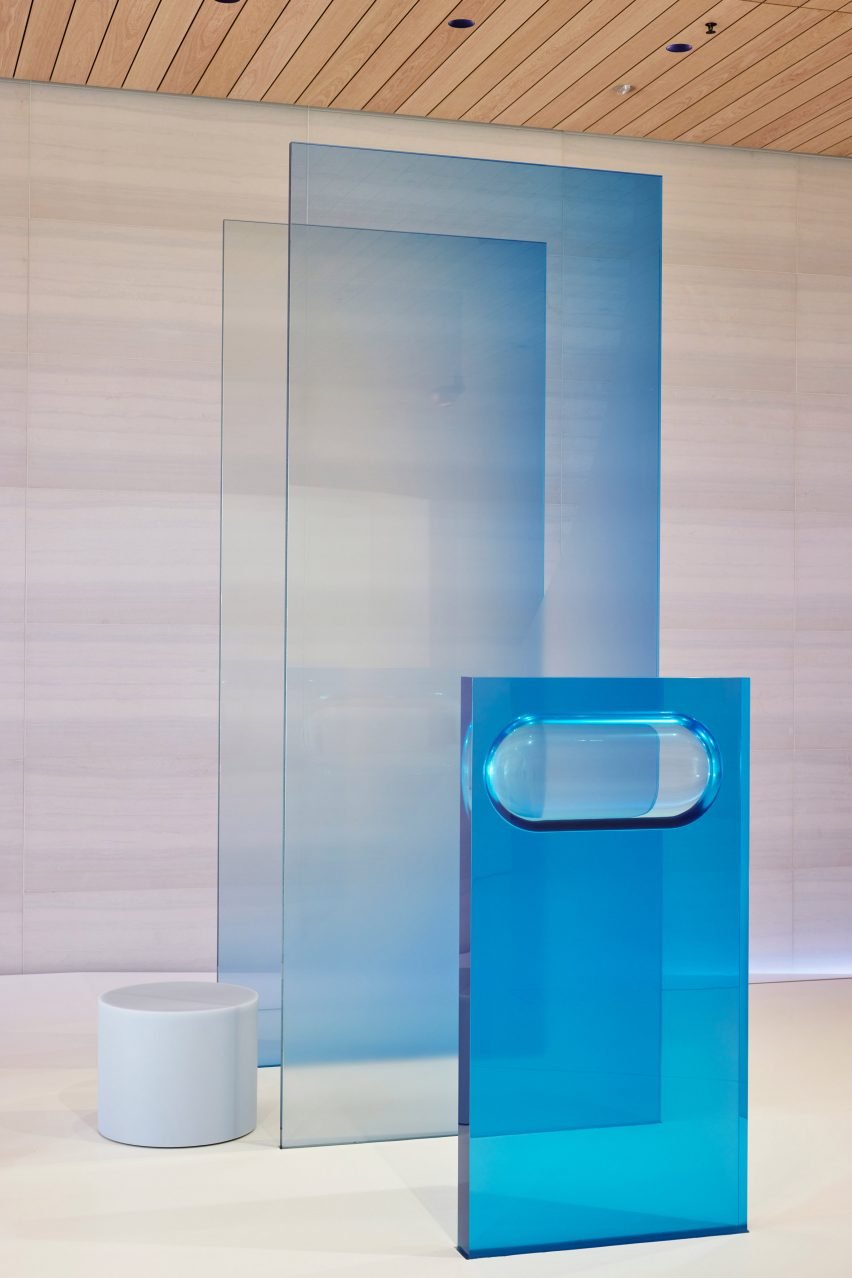 Marcelis aimed to translate the colours into glass and resin forms
Marcelis aimed to translate the colours into glass and resin forms
Marcelis was made aware of the phone’s signature colours – orange for iPhone 17 Pro, lavender for iPhone 17 and Miss Blue for the iPhone Air. She translated these colours using a similar process to many of her other pieces.
“This is really no different to other projects I do,” she said. “When we want to go for a specific colour, we have a reference, then we start creating samples and then fine-tuning.”
“Especially with the glass, it was kind of an interesting process, because the lavender and the mist blue are so light when you blow it up or put it in between glass, it becomes invisible – just kind of white,” she continued.
“So we needed to intensify that colour and then to see, exactly, when would it be too much like, what was that like?”
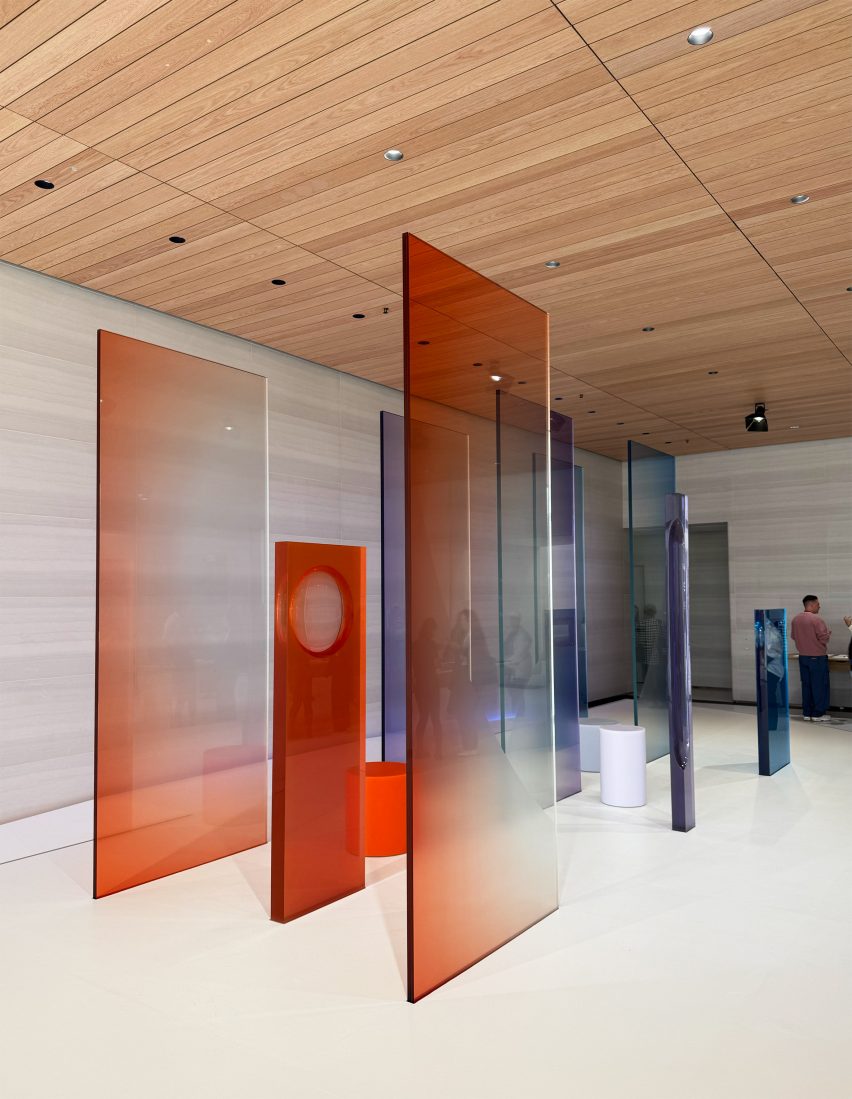 It was designed to be viewed through an iPhone. Photo by Tom Ravenscroft
It was designed to be viewed through an iPhone. Photo by Tom Ravenscroft
However, unlike the majority of Marcelis’ projects, the Apple installations were primarily designed to be seen through the lens of an iPhone camera.
“At the end of the day, these spaces are about creating content, so it was also about being able to get as much different points of view,” she explained.
“Another interesting element to this process was that most people will see it through the lens of an iPhone,” she continued.
“What’s interesting with the resin is, when you and I look at it, it would be clear, but then when you take a picture of it, there is this purple undertone that really comes out.”
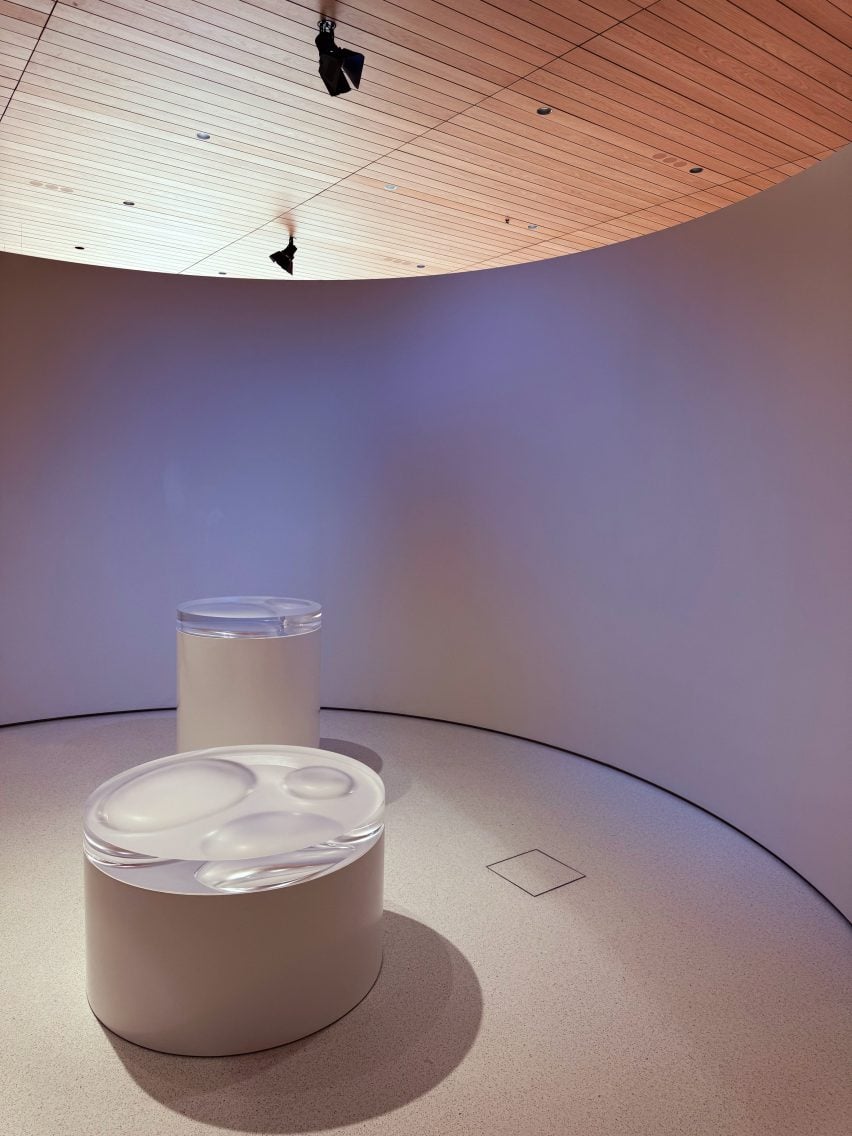 The tables evoke the Apple operating system. Photo by Tom Ravenscroft
The tables evoke the Apple operating system. Photo by Tom Ravenscroft
To determine how the pieces would appear on iPhones and in pictures, Marcelis and her team repeatedly took photos to assess how the colours would change.
“We were creating an installation that would hopefully make you want to take out your iPhone and capture the space, and as these images of a project so focussed on colour would then be shared around the world, we wanted to make sure these colours were super accurate,” she explained.
“We used iPhones to check the final colour on the materials we were creating for the installation,” she continued.
“For example, we took photos with flash to see how the resin would photograph as the human eye sees resin more white, but a photo captures its purple undertone, which is the true observation and colour spectrum.”
Designed by British studio Foster + Partners, Apple Park was selected by Dezeen as the most significant building of 2017 in our 21st-Century Architecture: 25 Years 25 Buildings series.
Earlier this year, Apple added the Observatory events venue into the hillside at the Californian campus.
The photography is courtesy of Apple, unless stated.

